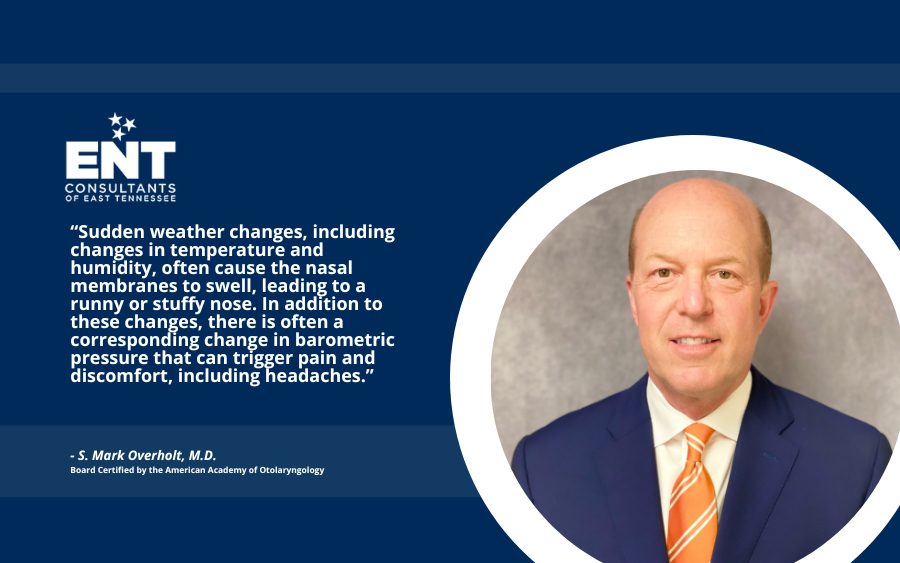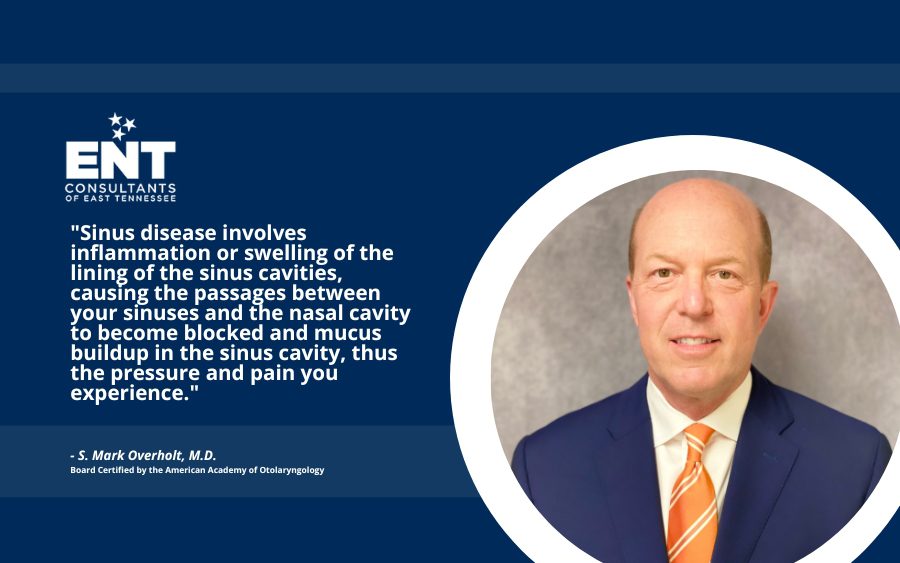Individuals suffering from allergic rhinitis, asthma, sinusitis, chronic bronchitis, and many allergies endure a frustrating and greatly reduced quality of life.
According to the American College of Allergies, Asthma, and Immunology, “Allergies are the 6th leading cause of chronic illness in the U.S. with an annual cost in excess of $18 billion. More than 50 million Americans suffer from allergies each year.”
Educating the communities of East Tennessee about allergies and how they can affect your lifestyle, as well as diagnosing and treating those impacted by them, is a major part of our focus at ENT Consultants of East Tennessee. We’ve included some common allergies and how we can help to raise awareness that relief is available.
Types Of Allergies, Symptoms, And Treatments
An allergic reaction is an overreaction of your body’s immune system to a foreign substance from inhalation, contact, ingestion, or injection. Here is a list of several types of allergies, their symptoms, and common treatment options.
Pollen Allergies
Often called hay fever, pollen allergies are prevalent, causing allergic rhinitis, which causes sneezing, stuffiness, and itchy, watery eyes, nose, and mouth, wheezing, shortness of breath, chest tightness, and coughing.
Treatment: Seasonal pollen avoidance, OTC or prescription oral antihistamines, anti-leukotrienes, nasal steroids, nasal antihistamines, and nasal cromolyn.
Dust Mite Allergies
Dust mites reside in the fibers of pillows, mattresses, carpets, and upholstery, reproducing in warm, humid conditions and capable of causing symptoms like those included in pollen allergies.
Treatment: Dust mite covers on pillows, mattresses, box springs, frequent vacuuming or cleaning of affected areas, HEPA filters, and medications to control nasal, eye, and chest congestion symptoms.
Mold Allergies
Mold spores are found in damp indoor areas, such as your basement, kitchen, or bathroom, or outdoors in grass, piles of leaves, hay, mulch, and mushrooms, especially during hot, humid seasons.
They can produce severe sneezing, stuffiness, and itchy, watery eyes, nose, mouth, wheezing, shortness of breath, chest tightness, and coughing.
Treatment: Reducing dampness by using a dehumidifier, cleaning and repairing water leaks to prevent mold growth, and OTC or prescription oral antihistamines, anti-leukotrienes, nasal steroids, nasal antihistamines, and nasal cromolyn.
Animal Dander Allergies
The allergens produced in the sweat glands and saliva of animals (especially indoor pets) can be inhaled and cause the same symptoms in the eyes, nose, throat, and chest as other inhaled allergens.
Treatment: Removing pets from your home in extreme cases or not allowing them on your bed or sofa, HEPA filtration air cleaners, frequent pet bathing, and medications similar to other inhaled allergies to address symptoms.
Latex Allergies
Contact with latex from rubber gloves used by medical professionals or while cleaning your home is a common type of contact allergy, which produces skin rashes, hives, eye irritation, wheezing, and itching and swelling around the contact area.
Treatment: Avoiding latex products, wearing a Medic Alert® bracelet, informing healthcare professionals of your allergy, creams, and medications to treat symptoms, and an epinephrine kit for emergencies.
Food Allergies
The development of antibodies against certain foods, such as milk, eggs, soy, wheat, shellfish, peanuts, and tree nuts, will lead to itching, hives, nausea, vomiting, diarrhea, breathing difficulties, and swelling around the mouth or throat within minutes after eating them.
Treatment: Identifying and avoiding foods to which you are allergic, advising others of your food allergies, reading product labels for warnings, and carrying an epi-pen (injectable epinephrine).
Insect Venom Allergies
Although a common reaction to an insect bite or sting produces swelling, redness, and itching around the sting area, those experiencing an allergic reaction have widespread hives, swelling of the face or throat, difficulty breathing, restlessness and anxiety, rapid pulse, and/or dizziness.
Treatment: Avoidance of stinging insects, carrying epinephrine, and seeking emergency medical attention due to anaphylaxis. If you suspect an insect allergy, then schedule an immediate examination by a board-certified physician trained in allergies and immunology because they can have deadly consequences.
Medicinal Allergies
Medicinal allergies can be due to inhalation, consumption, contact, or injection, depending on how the medication is administered. Skin rashes, sneezing, and/or congestion are common reactions, while severe reactions include difficulty breathing and/or swallowing and full anaphylaxis.
Treatment: Identifying and avoiding medications or a combination of medicines that lead to an allergic reaction, advising caregivers and emergency responders of your condition with a Medic Alert® bracelet, and emergency medical treatment.
Allergy Diagnosis And Treatment In East Tennessee
If you are among the 50 million Americans struggling with allergies, you will be happy to know that you don’t have to continue your struggle alone. Our ENT experts at ENT Consultants of East Tennessee specialize in diagnosing and treating allergies of all types.
Contact us at the Parkwest, Fort Sanders, or Lenoir City location nearest you to schedule an allergy testing appointment if you or a loved one struggles with ongoing or seasonal allergies to get the relief you need.





